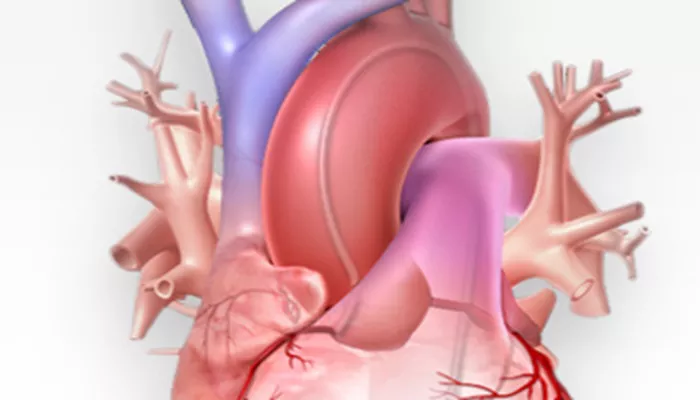Unstable angina is a serious medical condition that signals an increased risk of heart attack and other cardiovascular events.
It is characterized by unpredictable chest pain that can occur at rest or with minimal exertion, often lasting longer than stable angina episodes. Understanding the prognosis for individuals with unstable angina is crucial for patients and their families, as it can significantly affect treatment decisions and lifestyle choices. This article will explore how long individuals can live with unstable angina, the factors influencing prognosis, and the importance of timely medical intervention.
What Is Unstable Angina?
Unstable angina is part of a spectrum of conditions known as acute coronary syndromes (ACS), which also includes myocardial infarction (heart attack). Unlike stable angina, which occurs predictably during physical activity or stress and is relieved by rest or medication, unstable angina can occur unexpectedly and may not respond to standard treatments.
Symptoms of Unstable Angina
The symptoms of unstable angina can vary but typically include:
Chest Pain: Often described as a feeling of pressure, squeezing, or fullness in the chest that may last more than a few minutes or go away and return.
Radiating Pain: Pain may radiate to the shoulders, neck, arms, back, teeth, or jaw.
Shortness of Breath: This may occur with or without chest discomfort.
Nausea or Sweating: Some individuals may experience nausea, lightheadedness, or cold sweats.
Recognizing these symptoms is crucial, as unstable angina is a medical emergency that requires immediate attention.
see also: What Type of Fatty Acid Increases Heart Disease Risk?
Prognosis of Unstable Angina
The prognosis for individuals with unstable angina can vary widely based on several factors, including the severity of the condition, the presence of other health issues, and the timeliness of treatment.
Studies have shown that the short-term and long-term outcomes for patients with unstable angina can be influenced by various factors.
1. Short-Term Prognosis
The immediate prognosis for unstable angina is concerning. Hospital mortality rates for patients with unstable angina range from 3% to 5%, with higher rates observed in patients with additional risk factors such as advanced age, prior heart attacks, or significant coronary artery disease (CAD) .
Risk of Myocardial Infarction: Patients with unstable angina have a high risk of progressing to a heart attack, with studies indicating that 8% to 10% of patients may experience a nonfatal myocardial infarction within the first two weeks following an episode of unstable angina .
2. Long-Term Prognosis
The long-term prognosis for individuals with unstable angina is influenced by several factors, including:
Age: Older patients tend to have worse outcomes, with increased mortality rates observed in those over 60 years of age.
Comorbid Conditions: The presence of other health conditions, such as diabetes, hypertension, or heart failure, can significantly affect survival rates.
Severity of Coronary Artery Disease: Patients with multiple blocked arteries or significant left main coronary artery disease have a poorer prognosis.
Response to Treatment: Patients who respond well to initial medical therapy and lifestyle modifications may have a better long-term outlook.
Studies indicate that the average annual mortality rate for patients with unstable angina is approximately 5% per year, with many patients experiencing recurrent angina or other cardiovascular events after hospital discharge .
Factors Influencing Survival with Unstable Angina
Several key factors can influence how long a person can live with unstable angina:
1. Timeliness of Medical Intervention
Prompt medical treatment is crucial in managing unstable angina.
Patients who receive timely interventions, such as medications to relieve angina, antiplatelet therapy, or procedures like angioplasty or coronary artery bypass grafting (CABG), tend to have better outcomes.
Medications: Antiplatelet agents (e.g., aspirin, clopidogrel), beta-blockers, and statins are commonly prescribed to manage unstable angina and reduce the risk of future cardiovascular events.
Surgical Interventions: In cases of significant coronary artery blockages, surgical interventions such as angioplasty or CABG may be necessary to restore blood flow to the heart.
2. Lifestyle Modifications
Making lifestyle changes can significantly impact the prognosis for individuals with unstable angina. Key modifications include:
Diet: Adopting a heart-healthy diet rich in fruits, vegetables, whole grains, and lean proteins can help manage weight and cholesterol levels.
Exercise: Regular physical activity, as advised by a healthcare provider, can improve cardiovascular health and reduce symptoms.
Smoking Cessation: Quitting smoking is one of the most effective ways to improve heart health and reduce the risk of further complications.
Stress Management: Learning stress-reduction techniques, such as mindfulness or yoga, can help manage anxiety and improve overall well-being.
3. Psychological Factors
Mental health plays a significant role in the prognosis of patients with unstable angina. Depression and anxiety are common among individuals with cardiovascular disease and can negatively impact treatment adherence and overall health outcomes.
Depression: Studies have shown that patients with depression following a diagnosis of unstable angina have worse outcomes, including higher mortality rates . Addressing mental health through therapy, support groups, or medication can improve overall prognosis.
Conclusion
Unstable angina is a serious condition that requires immediate medical attention and ongoing management. While the prognosis can vary based on several factors, including age, comorbidities, and response to treatment, many individuals can live for years with unstable angina by making informed lifestyle choices and adhering to medical advice.
Timely intervention, lifestyle modifications, and addressing mental health are crucial components of managing unstable angina and improving long-term outcomes.

